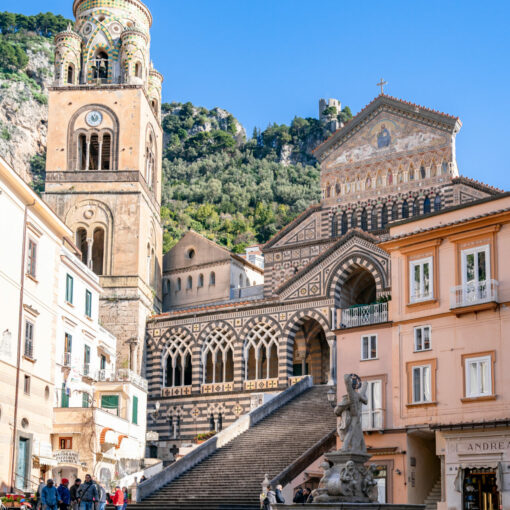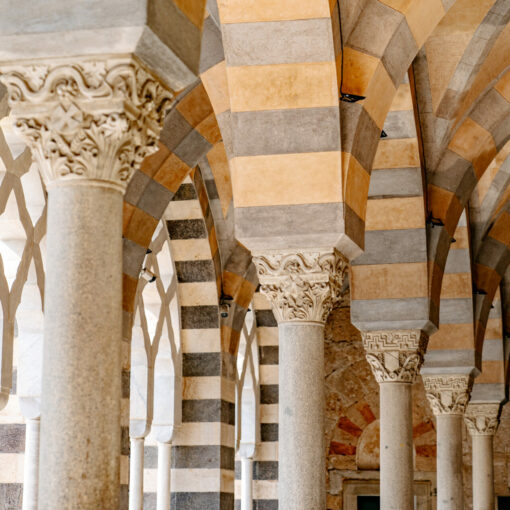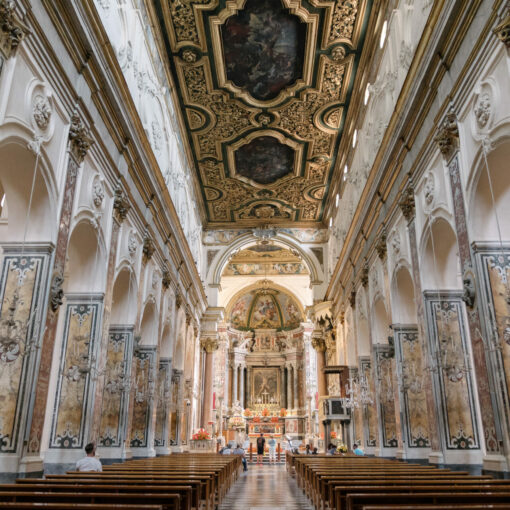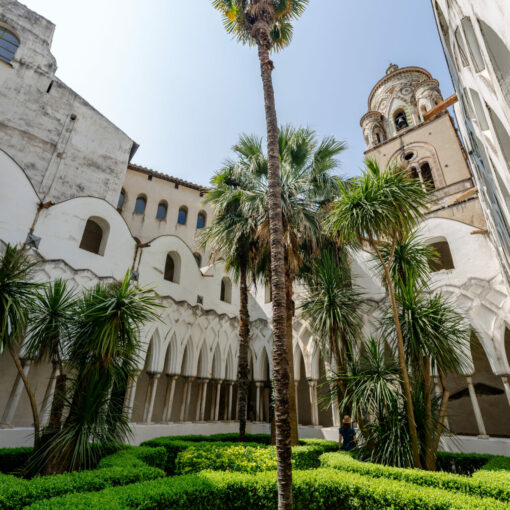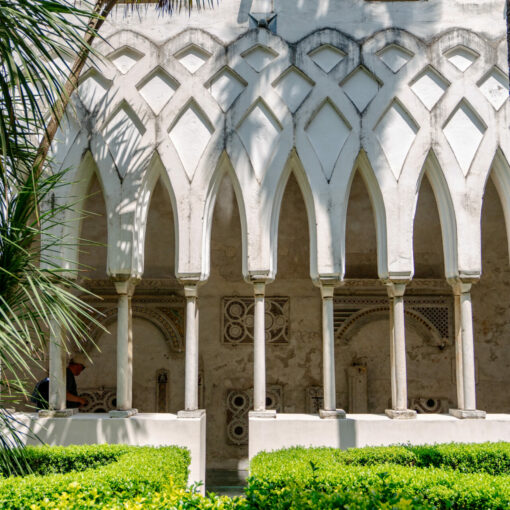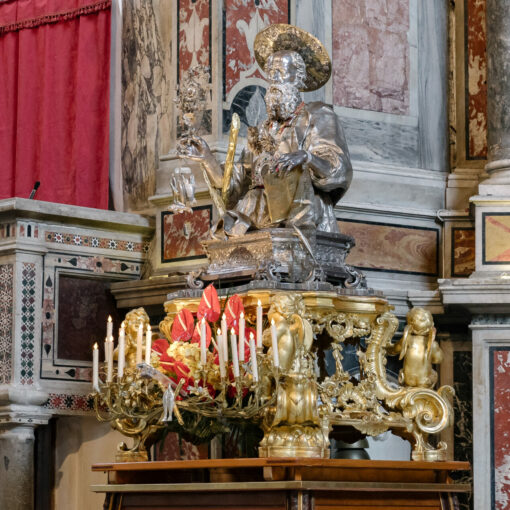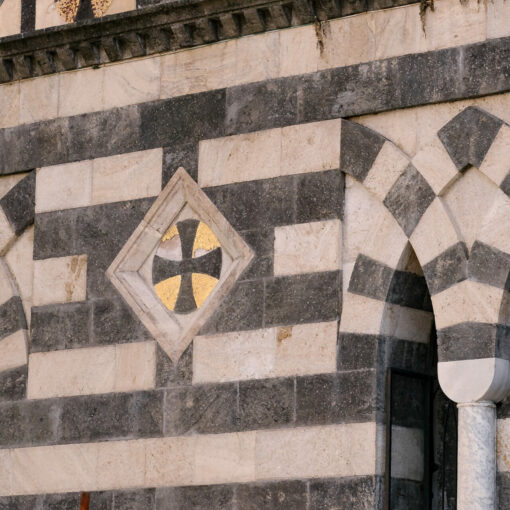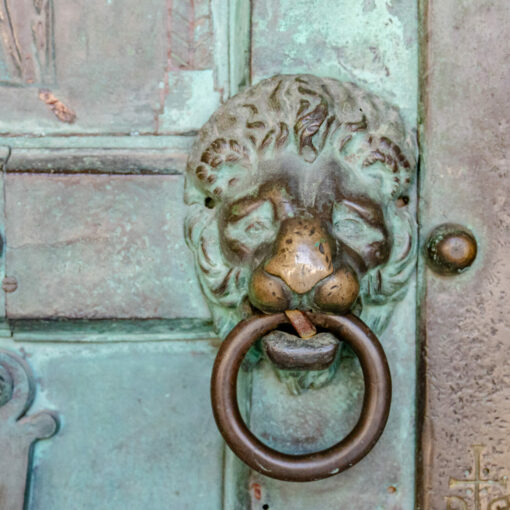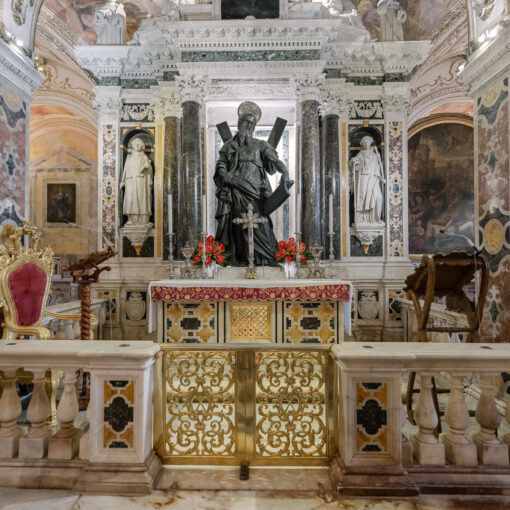The monumental complex of the Cathedral includes the Chiostro Paradiso, the Museo Diocesano della Basilica del Crocefisso, the Crypt and the Cathedral of Sant’Andrea. It is a precious testimony to Amalfi’s past, which, in the golden years of the Maritime Republic, was a crossroads between West and East.
The Cathedral of Sant’Andrea, founded in 987 by the Duke of Amalfi Mansone I, and expanded in the early 13th century by Cardinal Pietro Capuano, has the typical layout of a basilica, with transept and apse. Inside, there is a triumph of artworks: an elegant coffered ceiling, 18th-century paintings, a mother-of-pearl cross from Jerusalem, the baptismal font (a porphyry basin from an ancient Roman villa), two ancient Egyptian granite columns from nearby Paestum supporting the triumphal arch, and late 12th-early 13th century twisted columns and ambones. The crypt houses the relics of St Andrew which exude a dew, the so-called manna, whose effects are believed to have the power to perform miracles. The prodigy was first documented on 29 November 1304. One of the most valuable elements are the bronze doors, made in Constantinople and donated in 1060 by the wealthy Amalfi merchant Pantaleone de Comite. One of the most valuable elements are the bronze doors, made in Constantinople and donated in 1060 by the wealthy Amalfi merchant Pantaleone de Comite. It was a meeting point between East and West.
The Basilica del Crocifisso, adjacent to the Cathedral, and adjoined to it in the Middle Ages, takes its name from the 13th-century wooden cross housed there and dates back to the 9th century. It was built on top of a pre-existing early Christian building. Initially dedicated to the Blessed Virgin Mary and to the deputy protectors Saints Cosmas and Damian, it features three naves divided by columns supporting slightly pointed arches, with the matroneum positioned over them. The restoration carried out between 1931 and 1991 removed the Baroque superstructures, restoring the original Romanesque architecture. Currently, the Basilica houses the Museo d’Arte Sacra del Duomo (Cathedral Sacred Art Museum).
Chiostro Paradiso was commissioned by Archbishop Filippo Augustariccio in 1268 as a cemetery for Amalfi noblemen and noblewomen. It is a four-sided portico with interlaced pointed arches, typical of the Arab-Norman architecture, resting on fine coupled columns, with six chapels, including a fresco attributed to Giotto’s Neapolitan School. Today, it houses a few Roman sarcophagi, a 14th-century sarcophagus, and the remains of the original cathedral façade.

